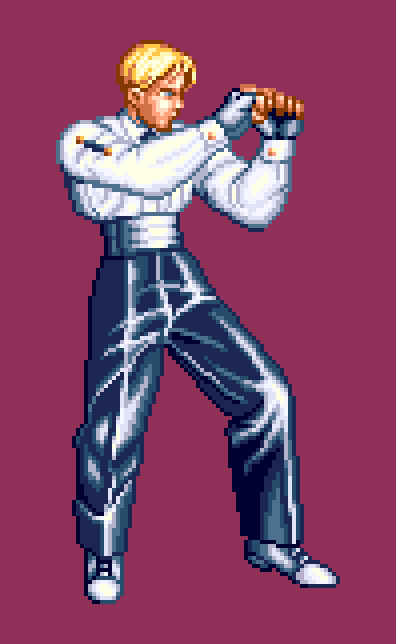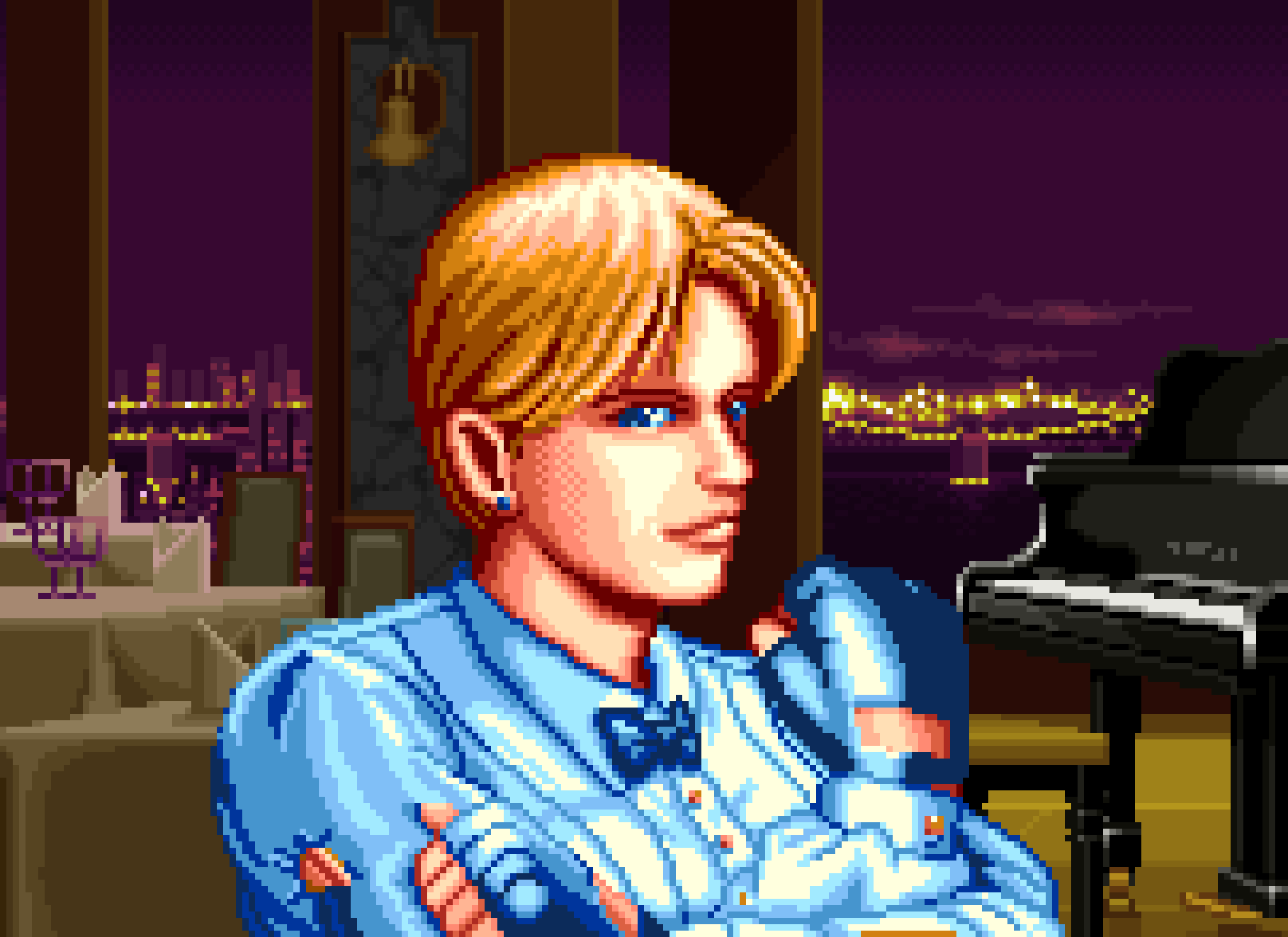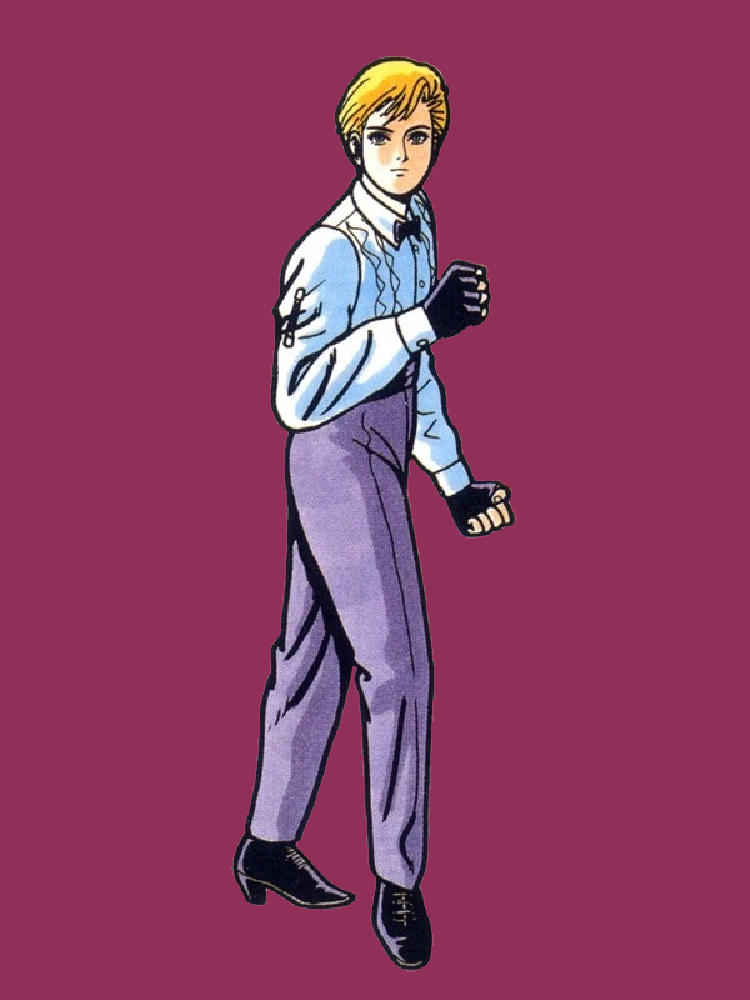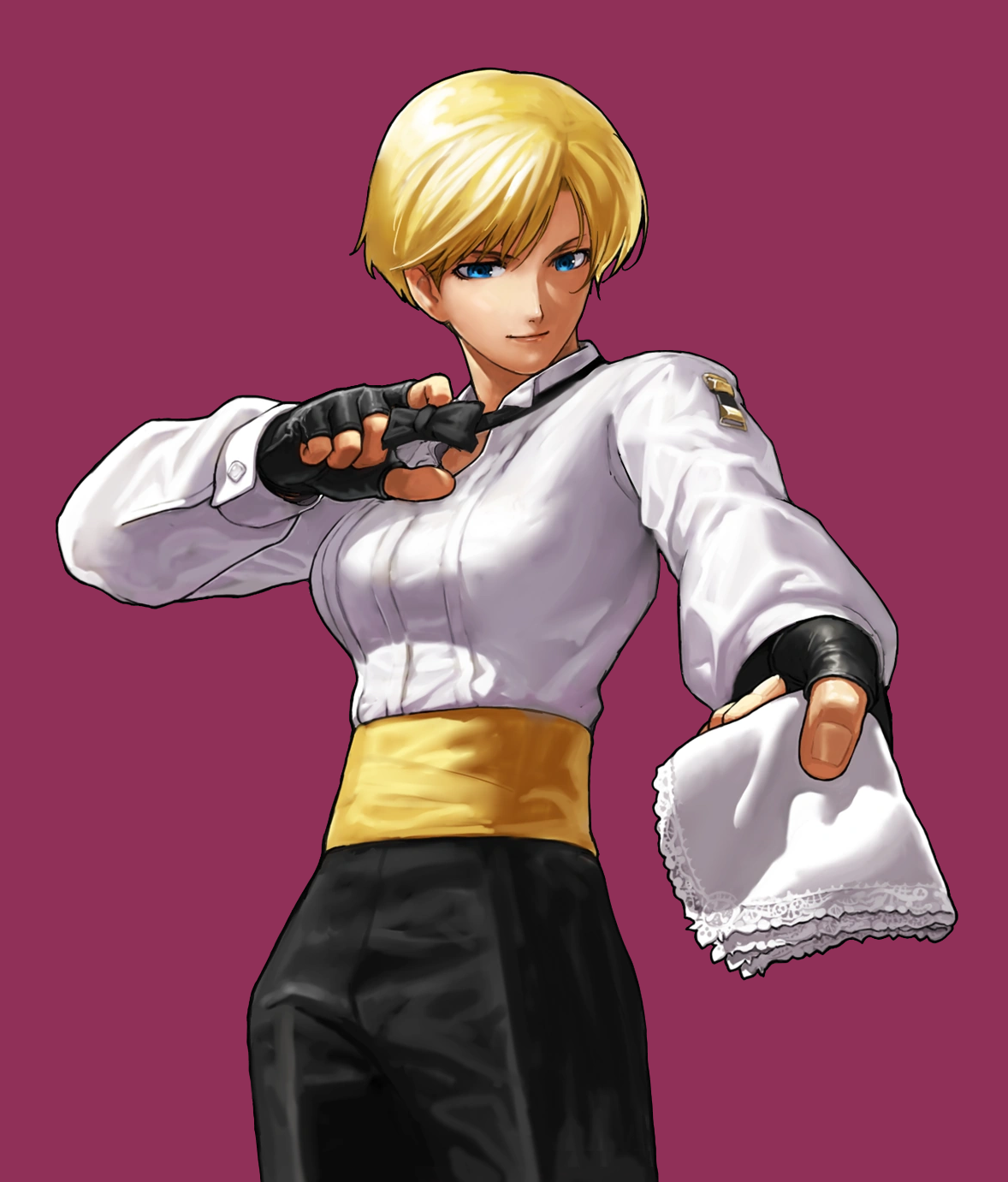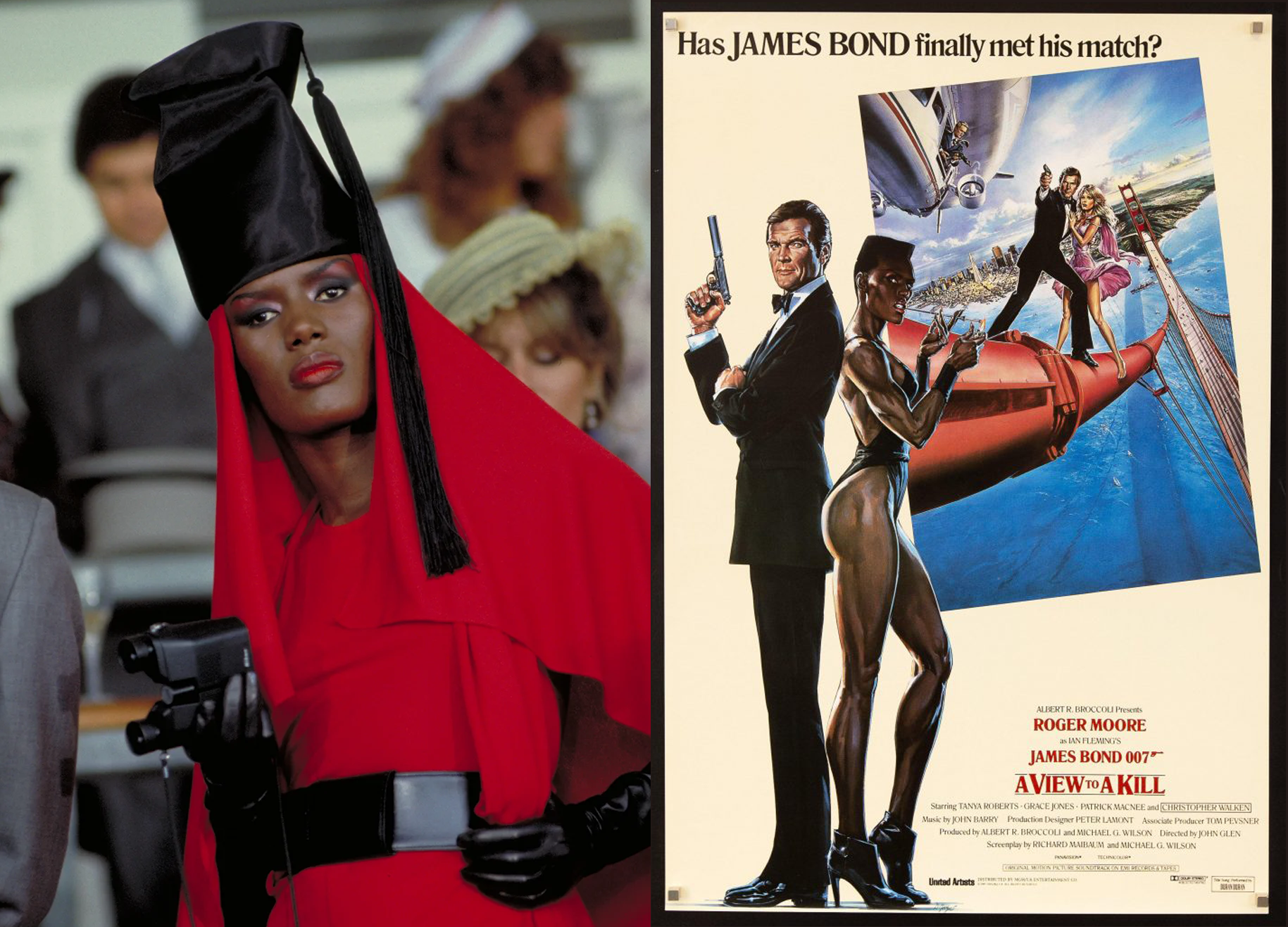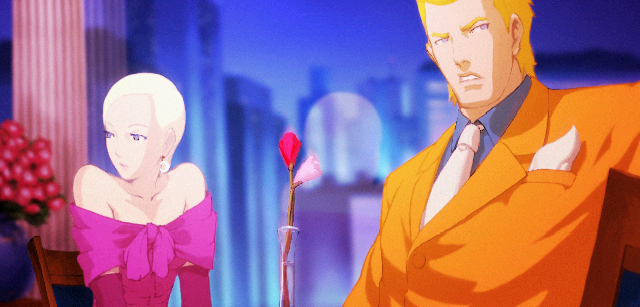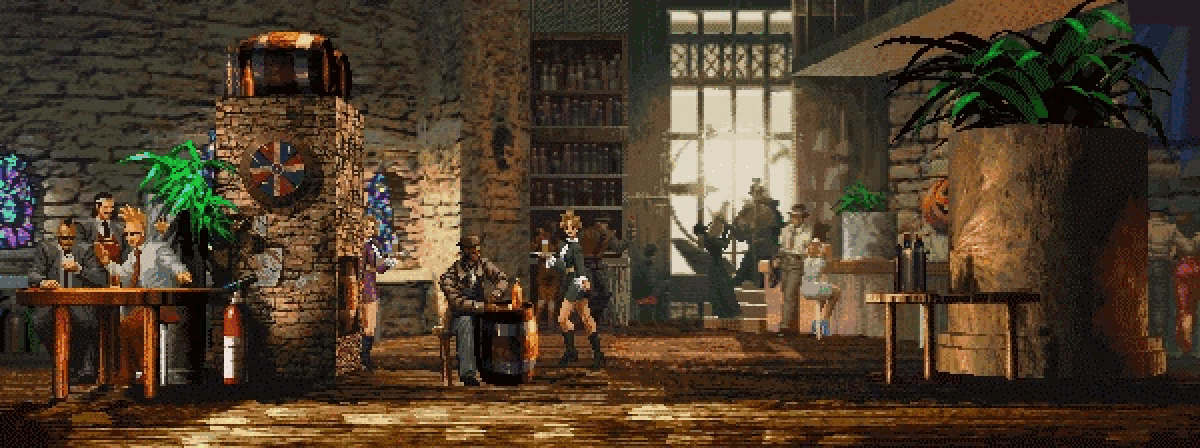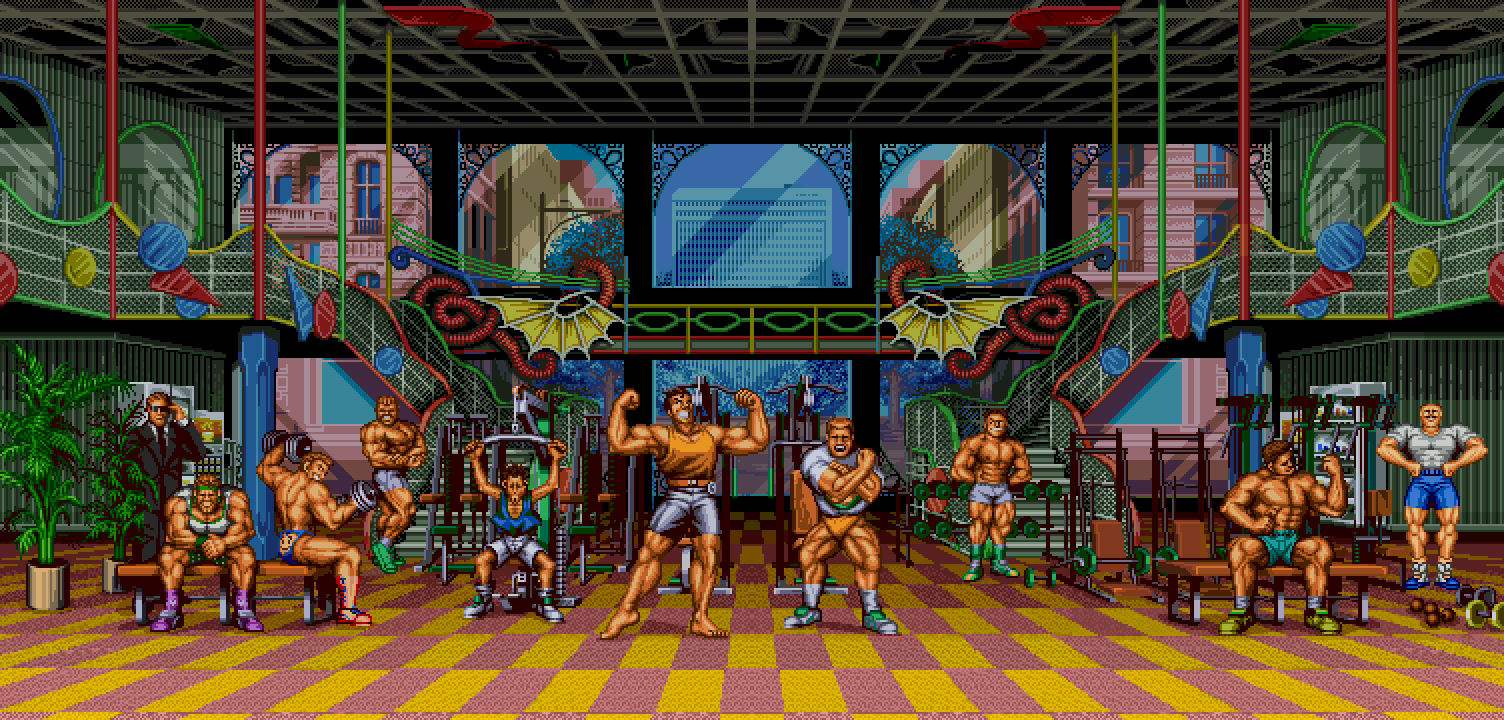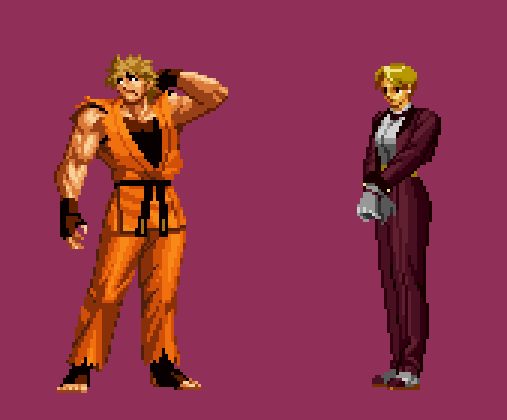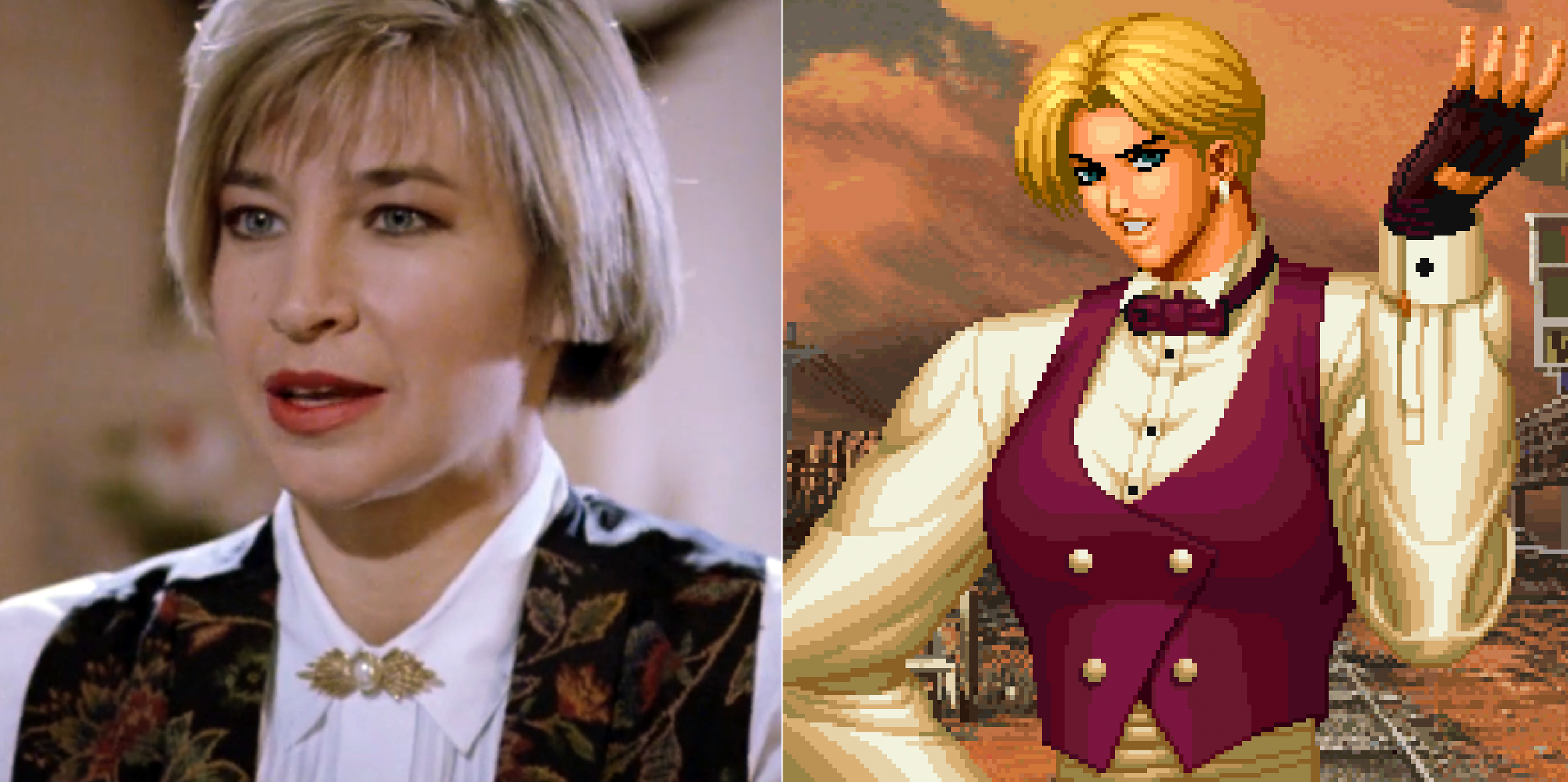Somehow, King from Art of Fighting Is Not a Gay Character
Do the Japanese people who make fighting games think bouncers are gay, generally speaking? Because they’re not, in my experience, unless you count gay bars, and I’m willing to bet the creators of Street Fighter and Art of Fighting didn’t necessarily know that.
In writing my piece on how Eagle became the first gay Street Fighter character, I kept finding ways in which he reminded me of a different queer-coded fighting game character: King, originally from the Art of Fighting series and now probably better known for her recurring appearances in King of Fighters. They’re both bouncers. They’re dressed more or less identically, especially in their debuts. They’re both antagonists, in that the first Street Fighter and the first Art of Fighting both feature two heroic characters taking on a slew of opponents in one-on-one fights, but neither Eagle nor King is a villain exactly, and in fact both seem to live by a moral code that puts their alignment squarely in neutral territory. And because Eagle is British and King is French, they both represent European aristocracy but specifically in the sense that both work for the moneyed class; neither actually belongs to it.
The big difference, I suppose, is that Eagle is more or less canonically gay, and King just seems that way. In fact, based on her appearance in the first Art of Fighting, you’d be forgiven for not realizing she is female.
Art of Fighting serves as a sort of spiritual sequel to the first Street Fighter game, which featured only Ryu and Ken as playable characters, taking on a host of opponents. Released in 1987, Street Fighter was masterminded by Takashi Nishiyama and Hiroshi Matsumoto, and both left Capcom to join SNK, whereupon Nishiyama directed Fatal Fury in 1991 and Matsumoto directed Art of Fighting in 1992. As a result, both the first Fatal Fury and the first Art of Fighting function more like the first Street Fighter, even if they both have sequels that would function more like Street Fighter II. In any case, Art of Fighting has its equivalents of Ryu and Ken, Ryo Sakazaki and his childhood friend Robert Garcia, punching their way through Southtown to take down the crime syndicate run by Mr. Big and rescue Ryo’s kidnapped sister, Yuri. The search for Yuri eventually leads them to Big’s restaurant, L’amor, where they’re confronted by the bouncer, King.
During the actual fight, the only giveaway that King is female is the fact that her voice sounds higher than other opponents’ do, though honestly it’s not that much higher than that of the previous character faced in story mode, Lee Pai Long. If you defeat King with a regular move, she’ll just send you along to the next battle. But if you defeat her with a special move, it will be revealed that she’s female because her top pops off, revealing that she has breasts.
The optics of this are not good, to be honest, and while a similar thing happens to Yuri once she’s playable in the sequel, at the very least it’s not only the female characters who suffer this face (though in Art of Fighting 2, they are they *only* female characters), as it also happens to Ryo.
Whatever the case, this gender reveal is especially a surprise because the promotional flyer for the game explicitly refers to King as being male, even if it also makes the otherwise strange decision to call out “his” beauty.
“The Meutai Master.” I’ll note that the TV Tropes page for King identifies her as an example of a bifauxnen, which is a term I had not heard before writing this post. (Image via the Arcade Flyer Archive.)
King’s official backstory explains that she hid her true gender to be taken more seriously as a Muay Thai practitioner and that she was an unwilling participant in Mr. Big’s criminal empire. She’s never been given a proper name, and we can only assume that King is the name she chose in order to pass as male early on and she’s just never changed it. When she returns in Art of Fighting 2, she’s only doing it to pay for an operation her little brother needs for his legs. What’s more, she doesn’t seem to be as intent on hiding her gender, though she still does present as more butch than most female fighting game characters past or present.
And yes, you can still knock her shirt off in battle, which seems… well, distasteful at the very least.
King sits out Art of Fighting 3, released in March 1996, but by then she’d already become a regular member of King of Fighters’ all-women team, appearing as a member in almost every incarnation, usually beside Yuri and Mai Shiranui from Fatal Fury. Because King of Fighters would eventually eclipse all other series as SNK’s premiere fighting game franchise, it’s pretty hard to miss that she’s anything other than female, name notwithstanding. But because it’s generally known that King is female and she still wears what amounts to masculine clothing anyway, she comes off as kinda gay. The fact that even her more feminine looks still have her sporting a Marcy D’arcy hairdo doesn’t do much to fight that perception.
Officially, we’re told that androgyny was always central to King’s existence. And if we’re to believe this story, it seems like SNK conceived of her as a mix of masculine and feminine characteristics and then worked backwards to explain this in the context of the game’s story. According to an interview with an unnamed designer in a 1993 issue of Japanese magazine Gamest (and translated by the good people at Schmuplations), the idea for this character originated with the Grace Jones character May Day in the 1985 James Bond movie A View to Kill, though the design would depart from that fairly drastically.
From the interview:
Q: How was King created?
A: We struggled a lot with whether we should include a girl character in a vs. fighting game. But Art of Fighting is an especially manly, sweaty game, so we thought we’d try adding a single girl to the roster as a point of contrast. But we didn’t want her to be delicate and frail. Our original model for King was the actress Grace Jones from the 007 film. We made her white, then made her look kind of half-Japanese. She had those super high cheekbones, and her hair was closely cropped. But we felt that she wasn’t sexy enough after all, so we gradually started making her more girl-ish, until we achieved her present form.
Q: Looking back now, are there any [ways] you’re unsatisfied?
A: Maybe we should have given her a slightly bigger butt.
Q: What does she disguise herself as a man?
A: As a bodyguard, she wouldn’t be taken seriously if people knew she was a woman.
Q: What were some of the key points you focused on in designing King?
A: We paid special attention to the fact that though she was a woman, she was also a man. It was a balance between how masculine and how feminine she should be. We redrew her face alone dozens of times.
This alleged origin story seems weird to me, however, and not just because of the “We should have given her a slightly bigger butt” comment. While Grace Jones herself is known to rock an androgynous or outright masculine look from time to time, there’s not much to her James Bond character that looks all that masculine; May Day reads as more high fashion than what King’s doing in Art of Fighting, and while she’s depicted as being unusually strong for a woman, she presents herself as being unmistakably female. What’s more, King’s look and function in the original Art of Fighting seems a lot more reminiscent of the 1989 Ronny Yu film China White, in which real-life Muay Thai champ Saskia van Rijswijk plays an unnamed henchwoman. Her fight scene with Russell Wong’s character even has her white dress shirt getting ripped open, revealing her cleavage and potentially telling the audience that this character is, after all, female — and that seems too spot-on to be a coincidence.
I don’t know how to square away the “official” Grace Jones origin story with this scene from China White, because it’s clear to me that the latter seems a lot more likely to have inspired King. But then again, these discrepancies are surprisingly common. As I’ve started before on this site, Street Fighter II co-designer Akira Nishitani claims that stretchy-armed yogi Dhalsim is not inspired by the similarly stretchy-armed yogi character in the 1976 martial arts movie Master of the Flying Guillotine but in fact by JoJo’s Bizarre Adventure. That seems pretty impossible, I’ll admit, and it seems equally impossible that China White isn’t a more direct inspiration for King than A View to Kill is.
I can only offer that the people who make games have fallible memories and sometimes skip over important details when explaining their creative process. That said, coincidences can also happen. After all, King dresses almost identically to Eagle, but there doesn’t necessarily seem to be any shared creative DNA between them, as Eagle seems to have been inspired by the Bruce Lee movie Fist of Fury. At the very least, Eagle’s coming out didn’t prompt SNK to explore King’s sexuality at all. To my knowledge, she’s never expressed any sapphic sentiments toward any female characters, either in Art of Fighting or King of Fighters. It’s occasionally suggested that she might be a love interest for Ryo, although the closest the games get to confirming that is the ending to King of Fighters XI, which shows King in a dress at dinner with Ryo. But as the scene plays out, it’s clear that it’s a fix-up engineered by Yuri and that neither King nor Ryo is interested.
It doesn’t confirm much of anything, I suppose.
If King isn’t a queer character, appearance notwithstanding, it is of note that SNK hasn’t attempted to femme up her default look. Her outfit has barely changed over the years, and in fact she’s even been shown employing two waitresses, Sally and Elizabeth, who wear what amounts to more traditionally feminine versions of King’s uniform. The bar King owns is called Illusion, which sounds like gay bar if I’ve ever heard one, but apparently it’s not, based on the very straight SNK alums in the background of it in King of Fighters ’95.
Pretty sure that’s Duck King at the leftmost table. And passing through the center you cam see Sally and Elizabeth waiting tables. The bar’s name would seem to be a reference to one of her super moves, Illusion Dance.
Unless I’m mistaken, I don’t believe there are any explicitly LGBTQ characters in King of Fighters or the other SNK fighting game franchises. I think as close as we get is Benimaru Nikaido, whom I discussed in the Eagle post, and who is more likely just a character so made in the vein of JoJo’s Bizarre Adventure that he just reads as gay to western players who aren’t familiar with the Hirohiko Araki series’ rather particular take on the male aesthetic. But as a result of King of Fighters’ lack of any actual gay characters, King and Benimaru are going to read as pretty damn gay, to the point that maybe it would be interesting to develop them along the lines of what has always been relegated to subtext.
And just because I always worry that I, as a gay person, am overreading something in a way that no one else is, I am finishing this one with an except from the December 1996 issue of the bygone gaming mag Tips & Tricks, which devoted a full page to “fun” custom teams that players could make in the then-new King of Fighters ’96. The presumably hetero editors put King, Benimaru and the similarly JoJo-influenced Iori Yagami on what they dubbed “the alternative lifestyle team.”
I have to say, I mentally prepared myself for the text to be a lot more homophobic than it was, but it was not that bad, pointing out only that these three had “an identity problem.” By the standards of the mid-’90s, that’s basically allyship.
Miscellaneous Notes
As gay as King might seem, she’s not the gayest thing in the Art of Fighting series. That would have to be the background in Yuri’s stage in Art of Fighting 2, which has a distinct Jane Russell “Ain’t There Anyone Here for Love?” vibe.
It is weird, I say, that there is a character in the King of Fighters games whose name is King and she’s not the main character. Surely this has confused someone at some point who didn’t know her Art of Fighting backstory.
My piece on Eagle translated the many lines of dialogue he had in Capcom vs. SNK 2, and the victory quote he gives upon defeating King is interesting: “This domain is off limits to ladies. The world of gentlemen is deeply profound.” Taken at face value, it seems like Eagle is telling King that the world of one-on-one combat is no place for women. And it might be that, but there’s often a subversive meaning to much of what Eagle says in this game, and I think this quote could also be read as him dismissing King’s efforts to dress in a masculine way — that despite some superficial similarities between the two, she’s only a “pretend” gentleman and not an actual one like he is. Which is kind of a jerky thing to say, but it’s not exactly out of character for Eagle, who on more than one occasion seems none too pleased to be in the presence of the game’s female characters.
Of note, perhaps, is the fact that King is apparently almost as busty as Mai Shiranui, who famously one of the most heaving bosoms in video games. Her measurements are given variously as 86-56-85 and 88-57-86. Mai’s, for comparison, 85-54-90 and 87-55-91, so I guess you could say King’s work uniform is quite the feat of tailoring.
I can’t think of any good reason why King should be French except that an especially famous character who also dresses as a man, Oscar from the anime Rose of Versailles, is also French. I go deep on this in a post about Charlotte from Samurai Shodown and the various fictional and real-life revolutionaries that inspired her. I do think her little brother, Jan, should probably have been named Jean if he’s also meant to be French.
Finally, I think this is the first in a series I’d been wanting to do exploring the Metroid-style gender reveal as it’s employed in various video games. As near as I can tell, King is the first example ever in a fighting game, but if I’m wrong, please tell me. And I still call it “Metroid-style” even if in a previous post I pointed out that Nintendo did it in Mach Rider first, and both Metroid and Mach Rider were probably paying homage to the opening scene in Barbarella. But expect more of these on Faris from Final Fantasy V, Captain Syrup from the Wario Land games, Akira from Rival Schools and more. Who else should I include in this series?
EDIT: After I posted this, more than one person got in touch to tell me how they thought King was at least partially inspired by Cynthia Rothrock and in particular her turn in Martial Law II: Undercover. I have to admit, I had not seen Rothrock’s movies before I posted, and to be honest, I was missing out, because Martial Law II was a pretty great watch. And while I can see some similarities between Rothrock and King, whose face has changed quite a bit over the years and who has looked like a few different IRL celebs.
Martial Law II has Rothrock’s character working undercover as a bartender and bouncer, and I guess her work outfit sort of looks like King’s. But I also thought her overall vibe reminded me as much of another SNK character with a Marcy D’Arcy haircut, Fatal Fury’s Blue Mary. Granted, Blue Mary is a private dick and not a cop and I don’t think she’s ever gone undercover, but I feel like Cynthia Rothrock was more or less split fifty-fifty between King and Blue Mary. But that’s just me.


